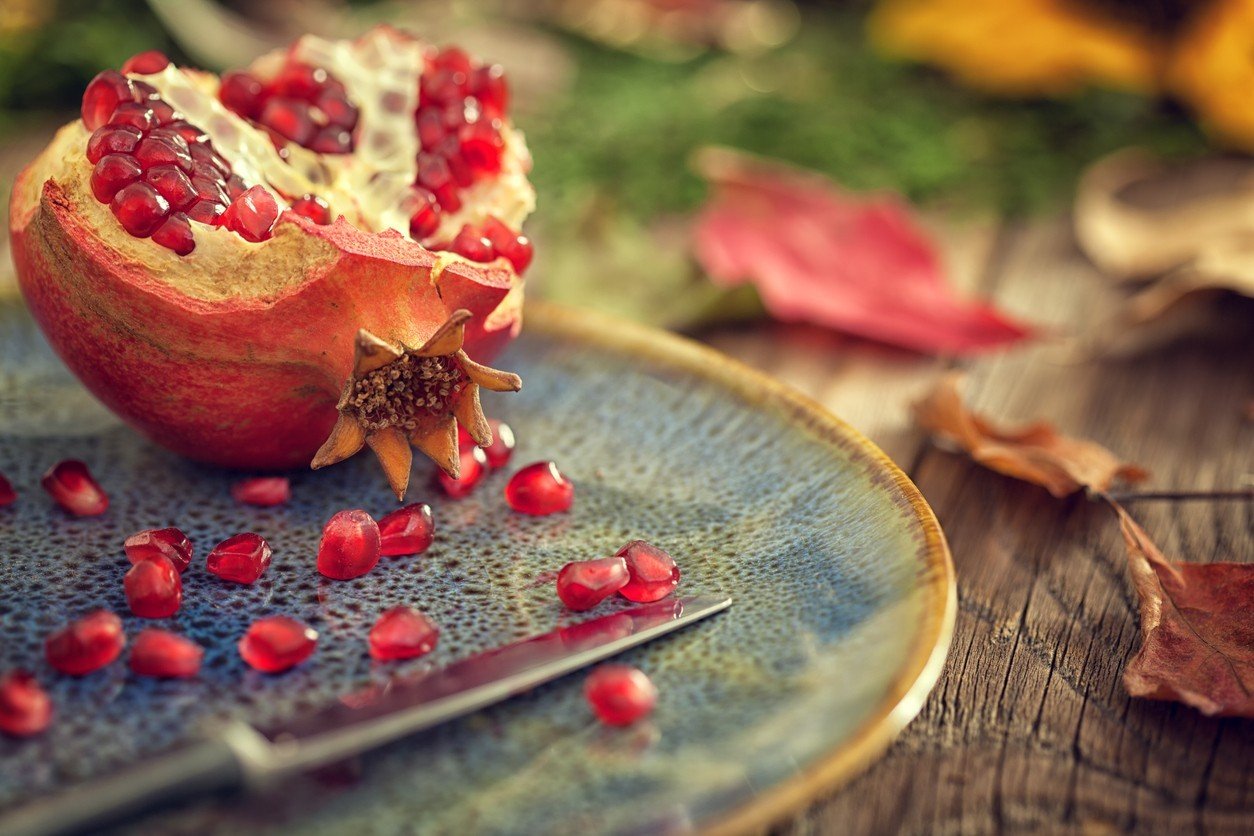
Pomegranate, the Autumn’s Gold
The pomegranate is the "fruit of Autumn", in fact it ripens in October-November depending on the variety. So the moment has arrived to enjoy the thousand benefits of this super fruit, but let’s start to know the tree from which it is born.
The Pomegranate tree (or Punica Granatum) is a plant native in South-Western Asia, which is now cultivated in the countries all over the world. The main producers and exporters are India and Iran for over one hundred and fifty thousand hectares. But be careful when you buy fruit or juices from non-European countries, the prices are lower but the controls too, to the detriment of quality and health.
In Europe the only area with an important production (4500 hectares) is the south of Spain which is also the main exporter. The quantities are not comparable to the Asian ones, but thanks above all to the mild Mediterranean climate that characterizes this part of the European continent, fruits have got great properties and a unique flavor.
In fact, for the cultivation of pomegranate, the temperatures are fundamental as they must be sweet without excess of sunshine or abundant precipitation or frosts.
These climatic conditions typical of southern Spain guarantee a higher quality and also determine the flavor of this super fruit that is very balanced even in sweetness thanks to the climate and the soil features.
Otherwise, the fruits from Asia have a strong roughness and often a too sweet taste but depends on you, it’s your choice.
The trees are pretty and small, from 3 to 6 meters in height, with deciduous leaves, which then fall in the winter and then sprout again in February. You can see the pomegranate’s trees wrapping the Mediterranean highway, from Alicante to the south but from some years also in Puglia and in the Upper Lazio.
Its flowers are reddish, some species are white or orange. A real show to see in the spring.
The flowers will then be converted into the precious pomegranates, but be careful when you pick them up, the branches from which they hang have thorns!
The name of the fruit comes from the Latin malum ("apple") and granatum ("with seeds"). The same origin is also recognized in other languages as in English Pomegranate, and in German Granatapfel (apple with seeds) and in Spanish “only” Granada.
The berry, called Balusta, appears very robust with a hard skin, a round shape and a diameter ranging from 5 to 12 cm, depending on the variety and, above all, on the growing conditions. The fruit inside has a so-called membrane that separates and protects the seeds, the arils come to count up to 600 per fruit and can give a tasty juice.
The pomegranates are deep red or partly yellowish. In some varieties they are surrounded by a translucent pulp colored from white to ruby ??red, more or less acidulous, which in the edible fruit varieties is sweet and fragrant.
Opposite the petiole, it has a four-five-pointed crown, residues of the flowery calyx, which gives it a "royal" look.
The preservation of the pomegranate is simple, it resists very well out of the refrigerator without ruining it thanks to its very hard skin that helps to preserve the precious arils contained inside. In this way it will be possible to enjoy for a long time the extraordinary antioxidant properties of the pomegranate, which we will be able to talk about in the near future.



